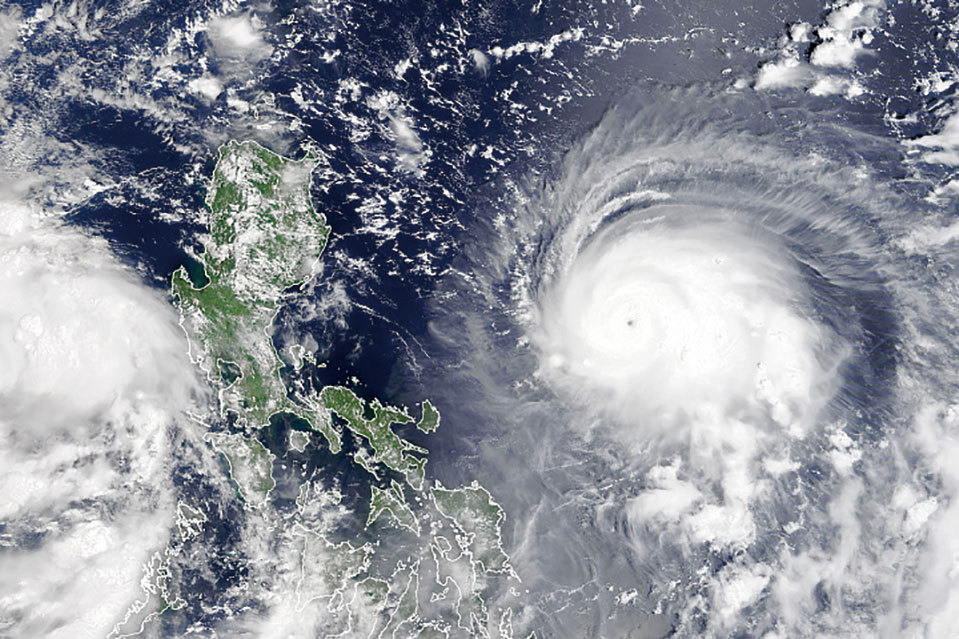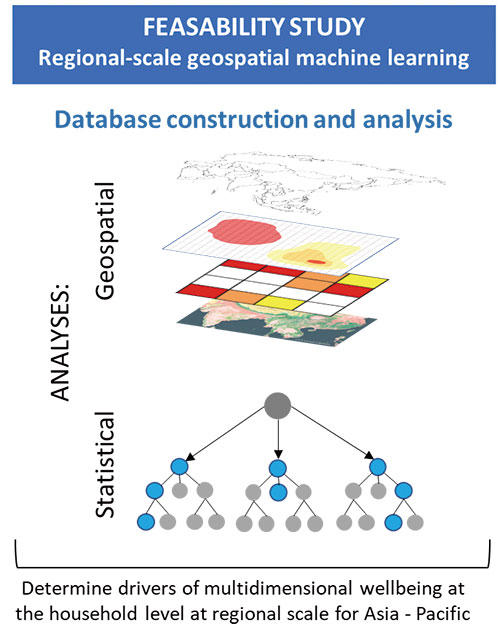.jpg)
Fisical Year Completed
2024
[FS]Enhancing disaster resilience of socio-ecological systems: Integrating multiscalar and geospatial environmental-hydrological-social data
[FS]Enhancing disaster resilience of socio-ecological systems: Integrating multiscalar and geospatial environmental-hydrological-social data
Abstract
This research aims to identify and measure the factors that affect multidimensional wellbeing in the context of natural and social disasters using a mixed-methods approach that weaves together geospatial, earth observation, and regional scale household survey data, and local-level participatory action investigation. In doing so, we will develop novel multidimensional wellbeing measures and identify outcomes in pre- and post-disaster affected areas across Asia. The results of this study will help direct bilateral and development cooperation funding toward enhanced resilience following conflicts and natural disasters.
Why do this research?
This project is motivated by key challenges to disaster recovery, risk reduction, and resilience. The Sendai Framework for Disaster Risk Reduction provides a useful roadmap for addressing these challenges; however, assessments of disaster risk reduction, recovery, and resilience have historically prioritized the economic and physical aspects of wellbeing. Ongoing work to include broader, intangible, and interconnected dimensions of wellbeing is nascent and remains an important area for research. While this applies broadly across disaster-affected and disaster-prone regions, this is particularly true in conflict- affected and fragile contexts where physical security is threatened.
Disasters could serve as opportunities to foster cooperation between conflict parties and build more resilient and inclusive institutions. Integrating climate change, for instance, into humanitarian efforts following disasters could reduce short-term and long-term vulnerabilities of societies to adapt to conflict and environmental risks. In some cases, disasters can shift power dynamics that could escalate existing conflicts, but there are also cases where they could weaken conflict parties, reducing the intensity of conflicts, at least in the short term.
Additionally, the spatial dimensions of disasters and conflicts and pre-existing governance mechanisms and political trends determine the impact of disasters on peace/conflict conditions. This project will provide a fine-grained analysis of these pathways between disasters and peace/conflict conditions.
 Photo 1 A satellite image of Typhoon Chanthu on September 9, 2021 released by NASA Earth Observatory
Photo 1 A satellite image of Typhoon Chanthu on September 9, 2021 released by NASA Earth Observatory
Results
What you want to do
We will identify the mechanisms, governance, and implementation pathways through which development cooperation and disaster aid contribute to multidimensional wellbeing outcomes in the Asia-Pacific region. The use of ethnographic methods to ground truth the calculated impact at the household level is a novel approach to evaluate conflict, disaster relief, and well-being impacts years after disaster recovery. To do these, we will employ the following three integrated phases.
Phase 1: Determine the effect of disaster exposure on multidimensional wellbeing through machine learning and spatial econometric modeling.
Phase 2: Construct generalized non-compensatory multidimensional wellbeing index through household surveys in selected sites.
Phase 3: Identify the pathways, processes, and mechanisms through which development cooperation is utilized to build resilience in disaster-affected countries through participatory action investigation.
News
-
{{ data.disp_date }}
{{ data.content }}
Project Leader
SIMANGAN, Dahlia
Research schedule
| 2024 |
|---|
| FS |
